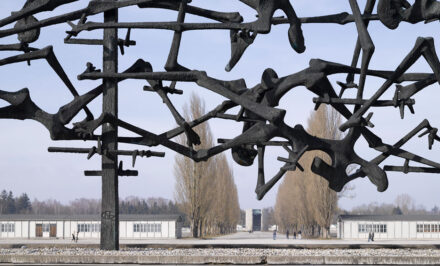 Sarah-Leah Pimentel. Several days ago, I read a talk that Fr. Kentenich gave to a group of high school boys in 1929 as they made their Consecration (“In the Shadow of the Shrine, Kentenich Reader, p141-156). As I read it, I thought how relevant this talk is during this year of our preparation for Jubilee 2014 as we continue to work on our apostolic and missionary projects.
Sarah-Leah Pimentel. Several days ago, I read a talk that Fr. Kentenich gave to a group of high school boys in 1929 as they made their Consecration (“In the Shadow of the Shrine, Kentenich Reader, p141-156). As I read it, I thought how relevant this talk is during this year of our preparation for Jubilee 2014 as we continue to work on our apostolic and missionary projects.
![]()
Fr. Kentenich’s talk reminds us of how much more we still have to do before we can stand in the “shadow of the shrine” and renew the Covenant of Love for the next generation.
The word “mission” has become the keyword in Schoenstatt this year. We are sharing our missionary and apostolic activities in the virtual tents of the Covenant Culture. These projects are a wonderful way of sharing the missionary dimension of our Movement with one another as well as with the Church and world so that they can bear much fruit. But in all the busyness of preparing these projects there is also a danger that we become so involved in the doing that we forget why we are doing them.
Renew the World
In all this busyness, what is our Schoenstatt Mission? In his talk to the students, Fr. Kentenich unequivocally tells us that our mission is to “renew the world” (p145). From many of the projects I have read about on www.schoenstatt.org, there is no doubt that it is our heartfelt desire to present these projects to the Church as a renewal for the world. But have we done all of the spiritual work to ensure their fruitfulness? Or do the concerns of the external aspects of our missionary work – the organizing, the meetings, the structures – sometimes dilute the fervour with which we carry out these projects?
Don’t get me wrong. I’m not saying that all of these things are not necessary. They are and they give us the opportunity to pray together about our Schoenstatt and missionary work, help us to discern the direction that the Blessed Mother would like us to go, and to share the fruits of our labour with one another. But it is also at these levels of organization that our human weaknesses may stand in the way of the real work that we have been called to do. And this is why it is important for us to remind ourselves of our Founder’s words.
Conquer what you have inherited
Fr. Kentenich urges us to be convinced of our mission to renew the world by taking ownership of the many gifts that we have received: “Conquer what you have inherited from your forefathers in order to possess it” (p144). It is not enough for us to go with the flow by offering our time and talents to work on this or that project. We need to conquer our heritage. What does this mean? It means that we must have the same fervour and fidelity as the first sodalists if we are truly to bring Schoenstatt into the next generation and share our greatest treasure – our Covenant of Love with the Blessed Mother – with the Church and the world.
Fr. Kentenich tells us how we can do this:
– By setting a “final seal” on our “personal mission” and
– “all-comprising self-surrender to this mission” (p144)
We are the Movement
Elaborating on the first point, Fr. Kentenich reminds us that our personal mission lies in doing the work of the Movement. He reiterates that “we are the movement” and that it “depends on us” (p147).
To what extent do I truly believe that as a consecrated Schoenstatt member I am the Movement? People have often heard me say that I don’t belong to Schoenstatt, but that I am Schoenstatt. This is not being boastful or trying to place myself in a position of power or even suggesting that I am more important than the Movement. No. It means that I am taking ownership of something that is a part of who I am. It is my way of saying that I don’t know what purpose my life would have if Schoenstatt did not play an integral part in everything I do.
This is what Fr. Kentenich means when he says that we need to conquer what we’ve inherited from our forefathers. But he also warns us: living out our consecration requires “touching humility” (p146). If my service to Schoenstatt has a secondary motive – such as a desire for power – I am not really serving Schoenstatt at all and have forgotten what I said on the day of my Consecration when I promised to become an instrument in Our Lady’s hands.
All-comprising Self-surrender
So what is the antidote for these drives which are part of our weak human natures? All-comprising self-surrender. Our Founder explains that if we have the right attitude, then we “want to keep nothing back anymore” (p149). This self-surrender has three aspects. The first: “we renounce half-heartedness and promise the greatest radicalism” (p150). This means that we want to “do away with mediocrity” and “aspire to the stars” (p150). If we do not throw ourselves wholeheartedly into our mission to renew the world, we lose some of our enthusiasm and become driven by other agendas. On this point, Fr. Kentenich is uncharacteristically harsh, saying that “whoever cannot bring himself to do this, whoever is satisfied with saying ‘That’s enough’ has no place in our Family” (p150).
What is he saying here? He is saying that unless our every word and every deed is a gift of love for the Blessed Mother who has entrusted us with this all-important mission, then our love is not complete. If we cannot love our Mother, then we have excluded ourselves from her Family.
Renounce every disordered love
Knowing that we are human and fallible and that our hearts often become “tired and cold” (Heavenwards, p103), Fr. Kentenich highlights the second dimension of our consecration: “I renounce every disordered love for created things and myself. I promise wholehearted and faithful surrender to the one I love with all my heart” (p151). So often we hear the complaint of Catholics that many church activities degenerate into politics because some people desire power and control. These are the disordered drives that Fr. Kentenich is speaking about. When our apostolic activities become a power struggle or when personality clashes jeopardize the fruitfulness of really good work, then we have given in to our sinful human nature and shut ourselves off from allowing the Blessed Mother to work a miracle of grace in our heart. Our energy and fervour is redirected towards things that do not produce the fruits we had hoped for.
Again Fr. Kentenich is harsh in the language he uses to describe what happens when we allow our fallible natures to take control: “if any of us follows the disordered drives and passions of his heart, he violates his Consecration” (p153).
People must be able to see that I belong to the Blessed Mother
Perhaps in this year of the Missionary Trend, which is also the Year of Faith in the Church, we are called to demonstrate who is really at work in our apostolic activities. Fr. Kentenich reminds us that “people must be able to see that I belong to the Blessed Mother, that I am her image and likeness” (p152). This seems a very high goal to attain, but it should not discourage us. If anything, it should become the goal we strive towards.
Finding my home in the Shrine
How do we do this? How do we stop ourselves from being distracted from our goal, from our mission to be Schoenstatt? By remaining firmly rooted in the shrine. Fr. Kentenich urged the boys to renounce any “youthful wanderlust” and to find “my home in the shrine” (p154). If our hearts remain in the shrine we cannot lose our way. Here we remember the graces of the shrine. The shrine is our home, our shelter from the world. In the MTA’s love, we find ourselves being transformed in love, where the deepest desire of our heart is to serve her. In this desire, there is no longer any space to serve other agendas or desire for power. This transformation enables us to recognize, once again, our true mission and to gain the courage to go back out into the world and renew it through our apostolic mission.
In the shadow of the Shrine…
In other words, our bond to the shrine, to the Blessed Mother and to our consecration fills us to such an extent that our only response can be none other but to share with others what we have experienced. If this truly is our heartfelt desire, the purpose for our existence, then we can confidently echo our Founder’s words: “In the shadow of this Shrine, the fate of the Church will be decided for the coming centuries” (p155).
How beautiful would it be if, 100 years from now, those future generations for whom we are now working would look back and see that our mission was successful and bore great fruit!

![]()
Sarah-Leah Pimentel, professional translator, lives in Pretoria, South Africa,
and is member of the editorial board of schoenstatt.org













